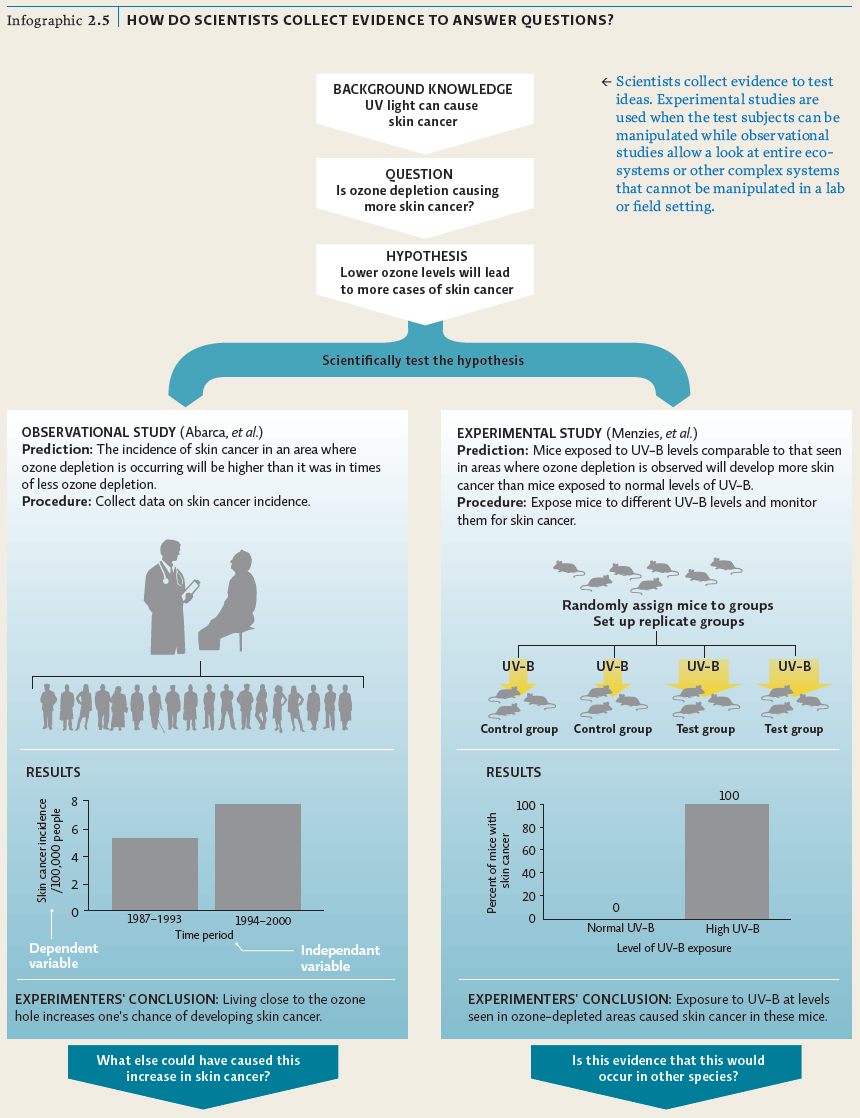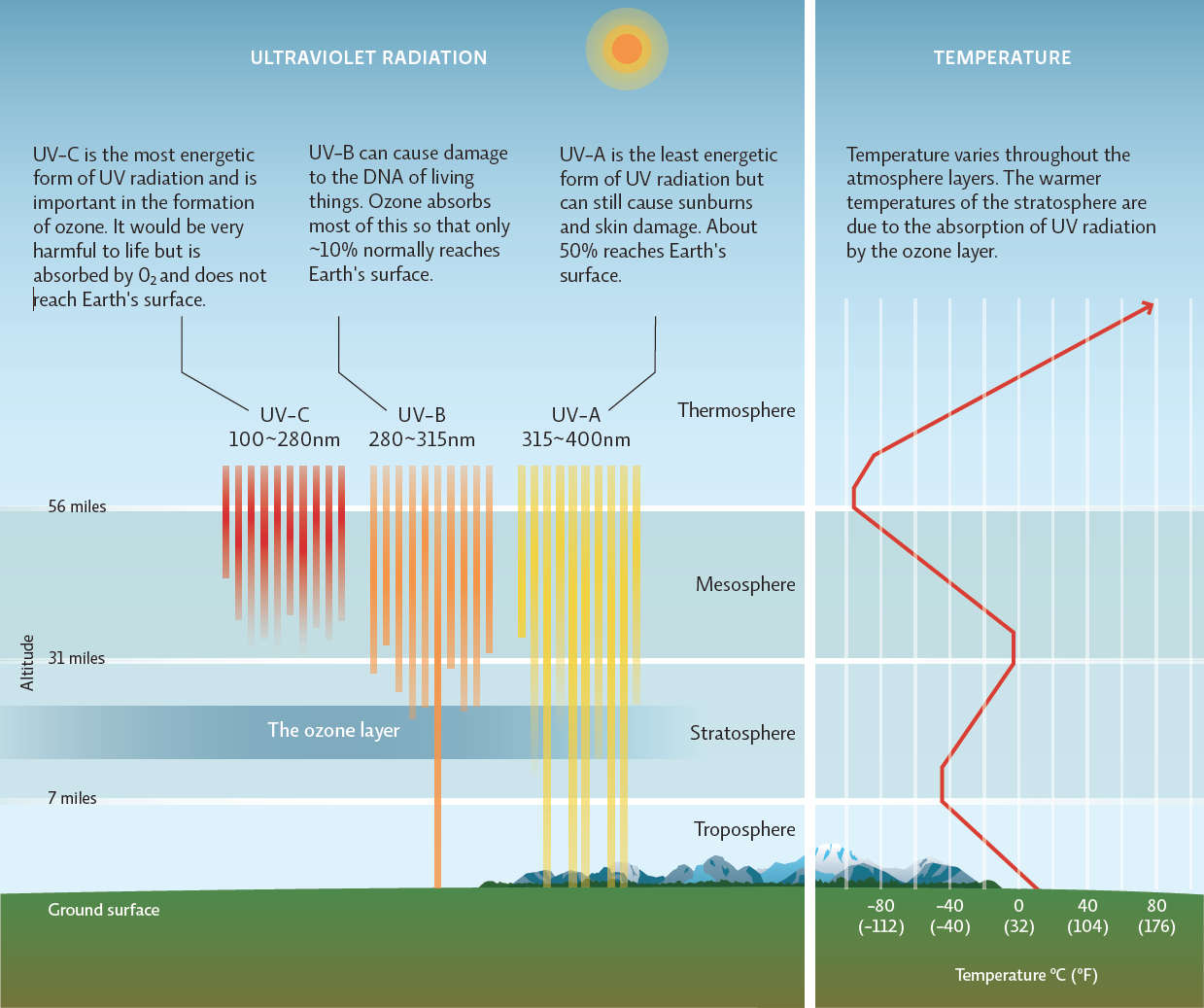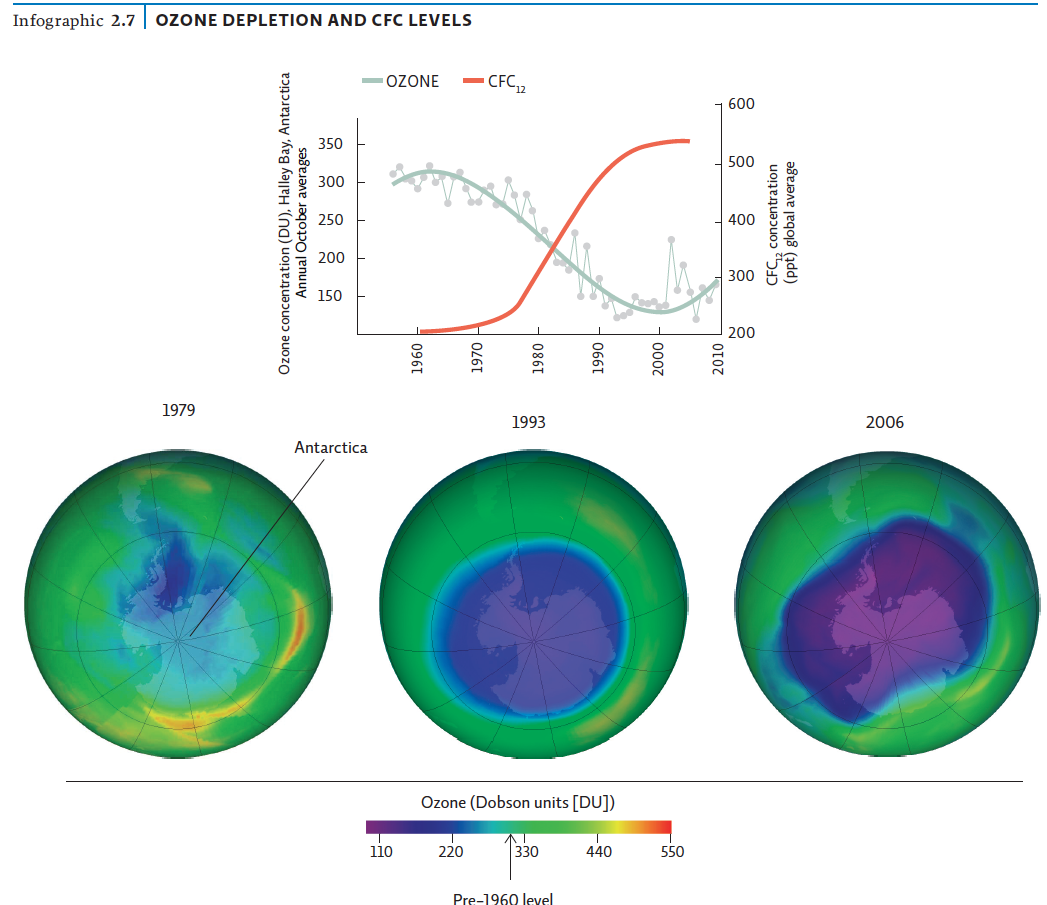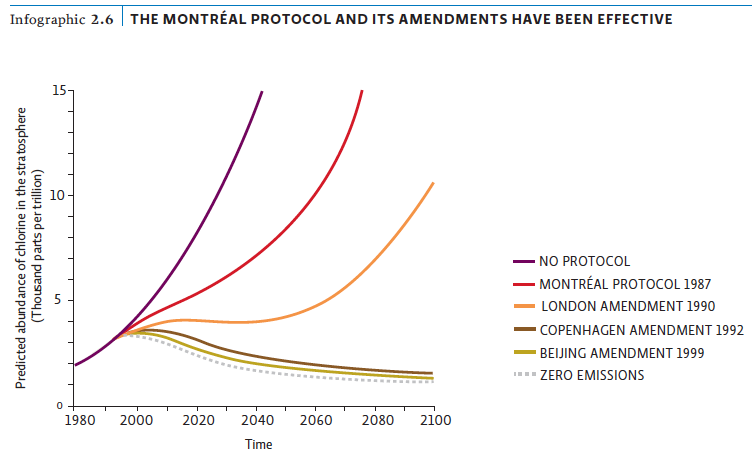Chapter 1. Chapter 2 Study Guide
Guiding Question 2.1
What kinds of questions are under the purview of science and why is science limited in this way? Why do we say science is a “process” and that conclusions are always tentative (nothing is ever proven)?
Why You Should Care
You can be certain that scientists are never certain—because the scientific method never proves anything with 100% certainty. This can cause confusion with non-scientists who want definite answers. Adding to the confusion is the fact that scientists use the term ‘theory’ completely differently than the general public. Understanding the process of science and its limitations will help you better understand and interpret scientific evidence.
What kinds of enquiry, process, and knowledge are considered ‘science’? Position the brackets along the ‘knowledge spectrum’ to indicate where science fits in.

Question 1.1
DwzfajsMBwNaCk80b6592ekcmkof78903eGyVfghZJdhO+dAaXFXCEHowxPGrkNnh8+f66oRRGYm1/kg12TGTYWN9wtoACVGFg8q2Z79AFRePdDCpPtfXrraaWZ8ycmzjQ2ltiMWngcY1x5tlGrWJsTBeDBlT3Et7kuVDhflH7T+jw+9bUHvy+AVih3QR1lzixF9NZW+Kvfb2gF/KKAoB6eM6bR9FPBMuC6W8+KdTz1VqtL15AwvtQ==Question 1.2
yUc2uYqtr2erksXV+IXUxfiYQZQtRZehRdTdB7Jqf9wTmam26GUVHuYOoEv470glZlB3pkXIoqRttXLEQuestion 1.3 Test Your Vocabulary
Choose the correct term from the drop-down box.
| Term | Definition |
|---|---|
| yKwh/HCxt7ZeXV0t9PYA1WnjlGtUb1GDW1HjxWyUVWf2C12Yvi6sInjxVhND8U2kkLl0hLkXgPZJ1T8wSdc63E0pzrkABE+oYrFKXA== | Information gathered via physical observation |
| 1eeLAt3CfoTDkQSTL5lQvocvNEsomyR3Hs0nq5Ozpodio8o91Ksg0R8IGvAQp2Xc0wjmTXPBaJBNmO0nDANjDAke5/XBscplSMAgzg== | Two things occur together—but it doesn’t necessarily mean that one caused the other |
| VB/l9A6ZJtUgRUAbo4oeet4K9HXP9kngedLYsa0MXWxpoo+31z438aRG5MzaGHErAubwTfZxJkzaV2nXIeX1oyrDkK3lF9s1iqSTlw== | An association between two variables that identifies one (the effect) occurring as a result of or in response to the other (the cause) |
| 6Ak+dPIFOMrZExnRcNqy6DCKH9XPC5eLk7daGQOt2+qKmisqWKMb9dwR7pklf4RHbc4n+TBNOgVlq9fpqxKFsQSa+DH5RrD3PB9U3w== | A body of knowledge (facts and explanations) about the natural world, and the process used to get that knowledge |
Guiding Question 2.2
How are scientific hypotheses generated and tested? What are the two main types of scientific studies and why do we need both types?
Why You Should Care
Understanding how scientists form and test hypotheses will help you understand scientific information in your daily life. Whenever you watch the news and hear that Food X causes cancer, you shouldn’t accept that as fact. Instead you should consider the science behind the news story. A group of scientists must have suspected that Food X might cause cancer and tested this hypothesis. But what kind of study did they eventually use? What if the findings by the scientists were from a completely observational study, such as a survey to determine how many cancer patients consumed large amounts of Food X? If this were the case, then only a connection between cancer and Food X can be made. It would take an experiment for the researchers to claim that Food X causes cancer.

Question 1.4
+U0va0S9J4Wi/ppEpVxeA97Ev747QEmCSoLK9VmLy/tTAHqqIuThD93trYdLQkV4JtGolEjWSaqLO4u1ADcgyDAIZQU=Question 1.5
8RgNWCiW0YQ0LgBnXgzQuw0DqhOumrob320omINa1hGuQIVoQuestion 1.6
OfMwlfX/vU3YVTnCYwPkdUgGXf9jMO75T12li769slkQS2ZK5T3pWUGQtCoQAe6+6WtDqRfLh9xe3ZDypWIge55ofGSyEx2oz59koh3umP7XWJf/zOEGLgcN7FNqJQPXtTeymSM6714=Question 1.7 Test Your Vocabulary
Choose the correct term from the drop-down box.
| Term | Definition |
|---|---|
| vwjitbBDtH596cifdKeX70SsN/tNfCC/yFcC3HbCpa79dvaoLhLpCEVvOALD+wDpmh83uU4cr3jUvH9VcZtSp6CuSY4IyLeEtR0o5+XQnXZnH2A5ca7noQ== | The procedure scientists use to empirically test a hypothesis. |
| TAPI+ricZ/tNN2TxFSVX68oLaDMGO5hKkBtvgpwIXQkqpaAMq/+dVxZrhEUMHPZlVtso06/VSaE+HV9IZOGpjc3nnuBseZYZsXz68MUW0wC50qw95CPkgg== | A possible explanation that generates predictions for which empirical evidence can be collected to verify or refute the hypothesis. |
| 0yfva1yfZftRKM44h2POlhPc9VYy1ewOjVWTg76AkKxAnqPMoz4chYVncPVj8C2ZmaYkH2HsISWpMW++4U+as0m+1pBK7yX28CERCXwdYwmysiZVbulBGg== | An idea or a prediction that can be proved wrong by evidence. |
| toP8QrjJJETSd53s+t1L3W9QF99pxTk8iwxiBheUq+M52FSrrykEbFUQrKecObPznLj+YkEAnaCCbbOK7YBkG7RQeISZYDih0V6B+GXG06ikLk4+D41wZA== | A widely accepted explanation of a natural phenomenon that has been extensively and rigorously tested scientifically. |
| uwdF2I0hkaKmCQPrYLXpp4KT/Lj8zPuZMuYn9JQ7uzE9HvGzttlPnm1LFCy/RH9uD0GlQMP8QpOG5UElNB07pQS68w9I2n1kA5N2QrsMuhnATc5T8DBE9w== | A possible explanation for what we have observed that is based on some previous knowledge. |
| z9zBgCSymEUeDgg1wwBxULqZdEALx6Jc4z/aZ230cquQ0IRmdA+AObB58mvqCR8mVUPR9VrcZtA/yTOCOEZoZ9N779XgbWV+hRY77zIvjmcwAdDGazIl1Q== | A statement that identifies what is expected to happen in a given situation. |
| 6ZAuDyD39Nz7FfPh8B8D4LbdHKBSp7oiG1XiuwfxMsqjZ8LVnKvK/oRsODoNWnVlSb+6iIaVA1ZfT3OBMxTjTnoSsCJZLjDs9hb401b2Gv5V2Ehkoh067A== | Researchers submit a report of their work to a group of outside experts who evaluate the study’s design and results of the study to determine whether it is of high-enough quality to publish. |

Read the description of each study below and decide whether it is experimental or observational.
Question 1.8
Scientists want to know what the typical lifespan was for an ancient Egyptian. After finding a burial ground with several hundred graves, the scientists use measurements of several different bones and teeth do determine the age at death. They then were able to calculate the average age at death and estimate life-expectancy.
d4ApYl1Ybly9mqc3as9DB4zsCIX8eHG9MyfIAkydjyDGPzo7SQFSySUf/lfneeRKnM1dGzNDu7Nf5bclEqGg7PRrt3LbAILvCND69okuhztXEfPsQuestion 1.9
Researchers are interested in knowing whether chipmunks decide what sort of food to eat based on how efficiently they can gather it. They make up peanut butter & flour balls in three different sizes and place them out near the chipmunks on a flat surface. They record which size was taken most frequently.
8r3q8xcS/qRzoeGRA8tturbENESW6C8PPsL5RdOxjzbNzsZO8BpDyIq9zG8VLJunLep2PaNGN3O3XcLLvO6Q50fJKhzy/I/H5NjjX/9akEFWQQjcQuestion 1.10
Scientists want to know whether vampire bats in the Amazon are ingesting blood from wild animals or domestic animals. They capture several vampire bats and test their blood. Because there are chemical differences between pasture grass and forest leaves, wild animals will have a slightly different chemical make-up than cattle.
d4ApYl1Ybly9mqc3as9DB4zsCIX8eHG9MyfIAkydjyDGPzo7SQFSySUf/lfneeRKnM1dGzNDu7Nf5bclEqGg7PRrt3LbAILvCND69okuhztXEfPsQuestion 1.11
Researchers want to know how much energy sparrows will put into raising their young. The researchers move eggs from the nests of some sparrows into the nests of others, and leave the eggs of other sparrows where they are. In this way, the researchers created a low, normal, and high brood size for the eggs. They watch how much food is brought in for each hatchling for a month.
8r3q8xcS/qRzoeGRA8tturbENESW6C8PPsL5RdOxjzbNzsZO8BpDyIq9zG8VLJunLep2PaNGN3O3XcLLvO6Q50fJKhzy/I/H5NjjX/9akEFWQQjcQuestion 1.12 Test Your Vocabulary
| Term | Definition |
|---|---|
| ty5iC5zjD3wzm/oHEj/MI0EyBjIiJmzJtAz2ehk+DEBvyred6ARcJqUKMJef4NXm6WmgAJ1sjbckDVaAxTUbcuAFfCfp95L4ZB0An5N2oeEWrlAQpEMpfdVdRVaeIsyzkRsYZB00+PxQtjTq4wMA5Q== | The group in an experimental study that the test group’s results are compared to; ideally, the control group will differ from the test group in only one way. |
| R8gNpHbZ2MuGIOGSmqIyO95BeljaNWkoFLaL8kicj49A3aZiiPpEYH9gl7BKBeWT25jzGFeH6x4H7FEqj9vg0Hn7nejFks2WxxIyf3QGjZV4vHidZ9Ch9lRSzKfRJqLSzFeYSnG1M3lrtOWVlBOYbQ== | The variable in an experiment that is evaluated to see if it changes due to the conditions of the experiment. |
| PqutfK/0GbirK/InYWUIe4j51vWSzVXecHfIeeVecKOTBXLgT0xMvmyqoOCLiXXdIs3gIswaNx2taA9s3VrB5WMwEBkk70cHTZ3RsbX2knUf3mJWwHzvF68uwJPSoaJ3OTWNpUuo/LwQemj6F/Wn/A== | Research that gathers data in a real-world setting without intentionally manipulating any variable. |
| gpnOuH0KSmm4uulDQ8Y2c5i913G8nTX76fe8E64Bkrft2R+FusN8izRc5vH73s87NqIZxe1q+zlQZfvocrYNdQGaVfhjQJbjY7fbr/rgzFpG+KQwrkltMu0Q/PfRSbt8MTEKH4o0J+CZDfZ/fUhPbw== | The group in an experimental study that is manipulated somehow such that it differs from the control group in only one way. |
| I0F7BM0Cbajm9UeDseP+7+76LBClyNmGTUVlRwILd+1el03Zq8TtNzGfjfsk1hC2rgce1oaGXXGWfKRDR8pAeSKgwVDXMYISNsXXLby7rx1SbvezfO37jJDu/avHipmUxq6dLtjkOTtOqSV7kT90UA== | The variable in an experiment that the researcher manipulates or changes to see if it produces an effect. |
| x2c5BRYCYC8HVHdUiiAjXdTEyZnIv7c1zKBPyqUQnsKqKFYOvGeH8tDcmfr6T4ogZfzy2vcJS6R1pFmAKmHNeNpJ7ZcRy4sJKKY3xBpDCz7cckHTsho0ctb0kh0gyfNkPUQUJ0baSZCocYvd48Ht0w== | Research that manipulates a variable in a test group and compares the response to that of a control group that was not exposed to the same variable. |
Guiding Question 2.3
Why is ozone in the stratosphere beneficial to life on Earth and how is it being depleted? What is the evidence that ozone depletion might be harmful to the health of humans or other organisms?
Why You Should Care
Because Ultraviolet radiation has more energy than visible light, it can cause chemical changes in some molecules; sun fading, for example happens because UV can break down pigment molecules. UV can also affect biological molecules like proteins and DNA. Suntans, in fact, are the body’s response to excessive genetic damage from UV exposure. Sunscreens work by absorbing UV before it can cause damage to skin cells.
Just like sunscreen, ozone in the stratosphere can absorb the energy from UV and dissipate it before it reaches the earth. The depletion of ozone from its interaction with human-made CFCs is cause for concern because it is allowing more UV to pass through. Since the genetic damage UV causes may lead to cancer, there is concern that rates of skin cancer will increase globally.

Question 1.13
The xJIST2USdACCWJtCZQghpR4bKW0= the energy of ultraviolet (UV) radiation, the more likely it is to reach Earth's surface.
Question 1.14
The higher the energy of UV radiation, the GIKAhc6fiTcLv+Jr7Wi+KQ== likely it is to cause damage to the outer tissues and DNA of organisms.
The scientists who named the layers of the atmosphere did not simply pick arbitrary altitude ranges. Each layer is different from the others in terms of many different characteristics. Based on this Infographic and the information in the chapter, can you determine what some of those characteristics are?
[PLACEHOLDER FOR ATMOSPHERIC TABLE]
Question 1.15 Test Your Voacbulary
Choose the correct term from the drop-down box.
| Term | Definition |
|---|---|
| CyvvN3NF3usGCOkjLUZiBDr25tO4lbGssysZorkYrA/m4U+MQ8JcKSvXiitYdbpMA9QasnYaXgQt2q2L0F7cgufqZ3fEXEigYt2mNF4X6WhNHnA/rbwYYKnFuy7sK6XY | Blanket of gases that surrounds Earth and other planets. |
| 4aobVOE+NbHWAoJbsnTo+vjX4/JQkT5D8YJ+pfBtapZkkdsgfJDWgtguRKdqzgDwgc85AthNv9K4AmRoWjMqgC9zkneokScCHEuSMtAFWtGYyMFRll+MlWGaF0K0wbs6 | Conclusions we draw based on observations. |
| PeGy2x3UKfhSrBBsIS5NKoIRzIGSG18etzfOy6WhgPvTAHG2S5GFd8ZmOoLjuPnIl4cWDW2ALhN2OAFK5uqQPndkEO/lbxylLhxAh/WwjDSbbyetAm1gxyVK2V/Mz3Is | Region of the atmosphere that starts at ground level and extends upward about 7 miles. |
| C6H6CuEuTjyNtnb5FCfu9pFmYdJpVZ6njt3SCaIcSfwH/4yl3WxgG+fvOSvYrFUR38sELedMlmfXMx2vav2nVoLgVq0aYlRxpPc6tCdSqLOYsObAdt6WPlMvkbs7oR6s | Information detected with the senses—or with equipment that extends our senses. |
| MoZOqulkP3rLoAWKeC0YZPkhabDCLPBuNJHwUt4IeWqdTXX2iBRxgvpJKGcAXi7rBWv+tVdP+iHVMwle5iT8UFzpf4LXml+tiSb1KeKaftu9iJTBURCA4bmA+93ppKLn | Region of the atmosphere that starts at the top of the troposphere and extends up to about 31 miles; contains the ozone layer. |
| 6dvDvgT4H4I7nCgpxbxKXdK4MrsJWhWzTj6j+8c2KjBRzioLSFQO2DmKNGEOOT1gXsb5Hbp+Hpcgs0CRhZ2dQJGF18/wRWj9wWV/zktex0FDtUUEzy4sxxPklOoRtsoI | Molecule with 3 oxygen atoms that absorbs UV radiation in the stratosphere. |
| T2xfST6EUP0WTmhPVaGD4g6raRBaXWhrVGDTcICRbYHTP/mIVDPJMdSXXgn5aegRwdoA06V5yNHsZsYgqnVY0IgaDgxb2OIQ4nFxHpkojD0+SkOZDZXazktrcsoOtHBE | A kind of solar energy whose wavelengths are shorter than visible light and longer than X-rays. |

Question 1.16 Activity Summary
UV radiation is screened by ozone because UV jeeGWPqrTZNjDS3muGJfaue8rmccA6jfm67rwMAfNYJ5UwDe8h26tONRm8q1RaJrRku/IrmanYVX6p6W.
Question 1.17
Explain this statement:
SSLMTYIWn7PkFgroXiEIjXL36N9IWHZHRNtiHHNT4ULlmW04skids3XgPtBHiJK8M34fEiA4Om81N5k9UlzmTwskkJ4L0/U9c3I1fBzM3ummGtx8IyT30BspIF8=Question 1.18
We live in the layer of the atmosphere known as the iEGy4hJNf+TawbLPGE4oMg==, but the ozone layer that protects Earth from UV radiation is in the ddXmEWiCSDY3u9Okd2DGCA==.
Guiding Question 2.4
How did scientists use the process of science to help us understand what was happening with the ozone layer and what unknowns still exist?
Why You Should Care
By now you’ve probably noticed that the overarching theme of this chapter is what science does and doesn’t do. While it’s important to know that science never answers a question with 100% certainty and for every question answered a new one is asked, that doesn’t mean that scientific findings can’t be used to improve our lives.

Question 1.19
a6NIGj2Kw+1rRwGWL+Dk7wQ0I9oVlCgYFC5iYSA57mBgM3ONwsJzVk3lgD7fydMLfjwYCY/tGUyCFPShZJPZvNvuexomTIwErLqeveL408ewsuoHLjBB461Xb+olbVtlofYFFa5WaUNTgU3KNO73xG0T+Yk/gfKZAsaBldmsvwr85vImgoXMYzWeMWIkXO5xdAUzbnptN2O/Wy6/Ow5+w0P137kTesoStOT+M1jGKeezqfCF7K3M/0QwX8rx1lnn/JDBxtOecuCIPApNYmKYMrr2BfiiqIIPHpbAS+7o+5uxBA2oKrhB9SXGQqF+pL28SpdcOa2x5UfgzocDtAN6KSXu9qpKMYTOkBTLjdhvL9e9SmregRZ3mw==Question 1.20
YsQ21i4Glv2koNJMBo+BIRL08MbB1B7BQTzPhmNWWothwrNzxIRGMpBSc07S/7+8j/lO8EQiEL7iJ/1pw2e/HfvQtbNRHxyTdfaiQCK9T6keRftCugTe0kRCjSFftakmoKmOzf4NrsuekUpR83X6R5/vb2fqUPaQxY3RMHxbG9B7/C4o7uMzMBn2dEAGelLsm3ewmiEdEHv9QS+WJEh4G9QyQcLCZ6mZPwViutr7Ica+aHgHtJ3BeyIzk2XM0O7ENQgLBYZwI3PUrkJ5epq365T70BLDDwREcbohtw7CeB7pt+OWP7uw9xakTStVk+RV9rZr6IrA8mtTEzN2lWcgurVFel70ubKEpcQR2dq2Ex0f5ygHTDZ5JNVOSfq78JYwsMx8SUElHN+ZdYl64mxTQ2PwhU6KcxNcYnaZtv2h/43qFIOFrYMoHMkYBlAKQzw0VKFV7XbP7Ym7Cf4vvcBPMoqTyQ0aU/4/NaulWwn7FcvW15NkFfmhCDM2oBw=Question 1.21
uUd+FvrpkF76LT8fBhBSo4XjvV0/Mx1uvqr8D/aiYuJxTHFTNoG8uf31MY9uK2k1iQEtP6X031hOobCykv5ZYJlW8oEdbIXGoq/hXKkXTGTdP3d3DLJXtITJAPxDm9y5EcNhN3dTtgdbgw+GW9mSdR4OpQkwMYIehwAEYig5r27Bfxk7ZDAr76WPi8iMec4EsXSwiaHenGsSii6pmUChMcHF8ZCHKkRI6vlGLrIQ40w5BmQKjxv2UWpG5NdZ/6I8uKqwfoayst/Cnh/7H/rwfRDoAOy61lU7iQisAlbdpjeJ3H3vGu32Va2yIjjEPzgOi1JLyFvBczGOjSczQfzcMw==Question 1.22
gZP5ajoPB/jrrkaCeLTvg6TNT9b8xpK/75GKhXIQnXkGpEKusElx0NYGUSmziVK3umDj/ZZRrkGshEgzPdQRmLHe7DkLXmfekkanGmSQbUhdpVegaGpfsGONZ1R84DWy3MHMobhYinokkQsGRA94yfs6XWZ0XfjlwEwMxBTpio/GYt4FC4TJldAOKgo34DI7kLrBljMqZj761ozo3KC9KN3er8Pu+uZJQ2T27EyNMhPViSAHddNMy/c6SIN29itXMFpTvwmPUBH4sq8zwrpvhw==Question 1.23
u5RDmaJ29QYalpqWBwxFkCLxvFCza64NVnorZMP6fmdqVGbOjn9vvSJVY62wKaOA1/wO3D9BcaqcDoJgLVeon4nAao3wupgpLUj/E9VJ5HFaj0QKs1P0jjITmT6kk1mE1/O9+wGbH8RDIKNWl229kiKUXmH/SGOp9pVp0cBZM0ebGC1CYQC19Q70d0VxnSCQMIU3rPG/ml2xlCtDAUoDtK+IZPa8Vl23VjT9CE5GHr5vSfYUOdRNh81ldHiv780WQuestion 1.24
Znr/LHF7k0gcUOA7jYhG819D1SgBpU1fpODMgv0nVKI3HfISsV86M/po7NUZ5utA/OpXroXwLoDDMtw+G7YXRDL2a5bc/q0rxxtDEw==Guiding Question 2.5
How did scientists, policy makers, and world leaders take the science about ozone depletion and turn it into policy?
Why You Should Care
As with experts in any field, scientists often have a difficult time getting non-experts to understand the value and implications of their findings. The Montréal Protocol is one of the best examples of scientists succeeding at using evidence to lead to policy changes that are helping a negative situation.

Question 1.25
aRrc/xa3JF7Hcp3+n5qZSKFLzWiKFV3FKncHYOgmZDrD7X46hyE8sXNZUxmSfm9ZtIOPC3mLsj/wbKSmSMQuD8rXBBNL6mCike/YylgkhZnkriO3GNiuuYnC9pf7Z726+4OUyXFTXQr7hRrSmTvlh1c0EcPjuZ7MFQW44nPjahgsRyKLwfyPFNMXiZA=Question 1.26
ABe/bjIPUHIFyIHTsPXrCAa7v/CLKdLiJ66XLs1/m5XtfR8lzM/ahQMThLdT8/rzS3GHOtCFKCeZ/gC+Question 1.27
rLV3Ufn2Cy5ftk2mDaOpx2JE7RV/hKinOytVZumWoUsBMfGtT+fKMJOtr3myjFMnrzro+m7Or0Bb6P6ZUovhGTLqBCpGosw7qPjfLXRorcOe1/9sNs1qTrE2JU36BhC/CjX8yiMdW7Q=Question 1.28
KV5RBT+i51ZYyJNO2ZC5xhk6u2+SKCW2FQxcxBX+37qoHbbZIS+PAoeGN6KGqsCkOaiacoKEisxbC2ARqgl6DERntWFO5CjGQuestion 1.29
dYsrcRcfsDF9bs3cqft5wIayepk8KjyaYBENLz6gs7hJyqx8jy0H9wdKZsXBAaBUVMo/CmNaCpbd9sy9B0VumhrLO03z1RwGy7/QevJUtNBgwcpAYJLVtI6mXaE=Question 1.30
vIBMakxCa1PYev/uHCJGDuXlR0kpe61ZaC0vcsaWkPapAjPxisVIGBBSROXXv3fzxvKUT5jn6PeSp5lycAHUg+uvWdYV/4NseR1/HqT49DNfP5qxHoEqo9+TWrzgmfOGsz8Iud4ZT8OllgJ1W/ouJeMCtxAeGdatIEsp3nMjGSPX/WmJ7HCT+g0Qq9YCxkWkTCZgR7HZ8aXj0EOC8RUl0eR80jA=Question 1.31 Test Your Vocabulary
Choose the correct term from the drop-down box.
| Term | Definition |
|---|---|
| e16qEmiRoR/QfAUQ5wDQ9eMJna+Z+Sj1j2CPe1A0a/GrEJcuG49RnoM+4l0Pd0tvf6oPzSNXFlKkUFBSA451vX7SbsB5aNbu1kbCu/Y84MHFbMbyGY0JSQ== | Plan that allows room for altering strategies as new information comes in or the situation itself changes. |
| ikIRqHPqwQqx1UMvF5qlg3fkSsnSy+TI71bI+vnczIWT25+icokg5UVix4aORgfzSDn6BC8OasLXOk4tGuvpjW1XwgbMyV6OLh9IoJaORSPX7LsMrLa4eg== | Acting in a way that leaves a safety margin when the data is uncertain or severe consequences are possible. |
| IkCZn7BYQ/9ArcqLSjd2HSmzMbIm+4hd3UJKp3H4pnjPMj2SR0D6j3KPQBcfIDDmJIODxsDXDHc/ZqvYdnCCMw+ZogZHLkFVKnh7xq0P3SlIt7mKggu1lg== | A formalized plan that addresses a desired outcome or goal. |
| d8XPPLG1Ad9SwnGJFi+RMO2WETZZy19EA7R59Mc/fuCy7+qytTVKs+S3mxSrxj4mV1cw8IrEbCuE3ouG01na0W79h8k51YIfVdXyOA6UNrt26mE1ruoxHQ== | A plan to deal with the problem of ozone depletion, most notably by phasing out the use of dangerous chemicals such as CFCs. |
| 13rdkodnLmkF7lXX3ANr40tQbv5ncD+p/RynjXzJp1GPmTkK9Yt5JkD6ZNJ9tFFHAT1dBIuF1e+CN8ZG1mTD27h2OCLgfvubmL8QZL3mqbrr5Jxe9MN9rw== | The mathematical evaluation of experimental data to determine how likely it is that any difference observed is due to the variable being tested. |
Short Answer Review Questions
Similar to the findings that CFCs released by human activity into the atmosphere coincided with depletion of the ozone layer, atmospheric scientists have also discovered a relationship between the human release of so-called ‘greenhouse gases’, like carbon dioxide and methane, and an average increase in global temperature. Like the Montréal Protocol, the Kyoto Protocol was an international compact to reduce emissions of these gases, but unlike the Montréal Protocol, it was never ratified by enough countries to make it a viable agreement.